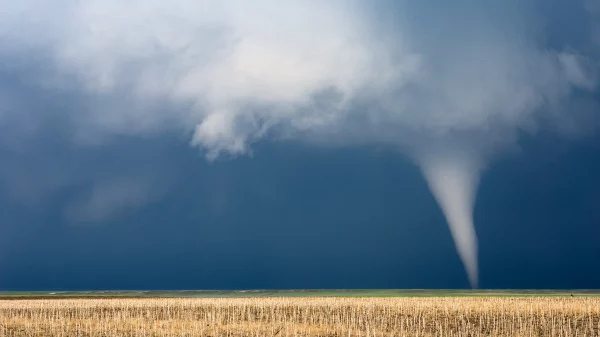A melon packing plant in Mexico has been temporarily closed by the Health Department of Mexico due to an investigation into salmonella infections that resulted in the deaths of three people in the US and five people in Canada.
On Friday, the Health Department of Mexico issued an order to temporarily close a melon packing plant that was linked to salmonella outbreaks that resulted in the deaths of three people in the US and five people in Canada.
The Canadian Public Health Agency connected the outbreak to cantaloupes bearing the Malichita and Rudy brands, although the department did not identify the offending company.
Mexico stated that testing was being done to identify the source of the contamination, but it did not specify what violations were discovered at the plant in the state of Sonora, which borders Mexico to the north.
To search for signs of salmonella bacteria, inspectors swept surfaces at the plant and collected water samples.
This outbreak has sickened at least 230 Americans and 129 Canadians since October.
Two cantaloupe brands grown in the Sonora region, Malichita and Rudy, are among those connected to this outbreak.
Pacific Trellis Fruit LLC of Los Angeles and Sofia Produce LLC of Nogales, Arizona—which operates under the brand name TruFresh—imported the fruit. Over 36,000 cantaloupe cases or boxes have been recalled thus far.
Health officials are cautioning customers, merchants, and eateries not to purchase, consume, or serve cantaloupe if they are unsure of its origin.
Pacific Trellis Fruit LLC of Los Angeles and Sofia Produce LLC of Nogales, Arizona—which operates under the brand name TruFresh—imported the fruit. Over 36,000 cantaloupe cases or boxes have been recalled thus far.
Health officials are cautioning customers, merchants, and eateries not to purchase, consume, or serve cantaloupe if they are unsure of its origin.
Salmonella Infection: Cause and Effect
An intestinal tract infection caused by the Salmonella bacteria is known as salmonellosis. Normally found in the intestines of humans and animals, salmonella bacteria are excreted through stool. The most common ways for humans to get infected are through contaminated food or water.
When a person has salmonella, they may not experience any symptoms. Most people experience cramping in their stomach, fever, and diarrhea 8 to 72 hours after exposure. In most cases, healthy individuals recover without special treatment in a matter of days or weeks.
Diarrhea can occasionally result in severe dehydration, which calls for immediate medical attention. In the event that the infection spreads outside of the intestines, potentially fatal consequences could arise. When visiting nations lacking in safe drinking water and adequate sewage disposal, there is an increased chance of contracting salmonella.
Symptoms
Eating raw or undercooked meat, poultry, eggs, or egg products, as well as drinking unpasteurized milk, are the usual causes of salmonella infection. The interval between exposure and illness, or incubation period, can range from six hours to six days. People infected with salmonella frequently mistakenly believe they have the stomach flu.
Salmonella infection symptoms and indicators could include:
- The diarrhea
- abdominal cramps in the stomach
- High temperature
- emesis
- throwing up
- Feeling cold
- Pain in the head
- Stool containing blood
A salmonella infection typically lasts a few days to a week in terms of signs and symptoms. Up to 10 days may pass during diarrhea, but it could take up to several months for the bowels to return to their regular routine.
Some strains of Salmonella bacteria cause typhoid fever, a potentially fatal illness that is more prevalent in developing nations.
When should you go to the doctor?
Since most cases of salmonella infection resolve on their own in a few days, most people don’t need to see a doctor.
However, contact a healthcare professional if the afflicted individual is a newborn, young child, elderly person, or someone with a compromised immune system.
- extends beyond a few days
- is linked to bloody stools or a high fever
- seems to be causing dehydration, as evidenced by symptoms like darker urine, less frequent urination, and dry lips and tongue.
Causes
Humans, animals, and birds’ intestines are home to salmonella bacteria. The majority of cases of salmonella infection occur from eating or drinking tainted food or water.
Contaminated water and food
Typical contaminated foods include:
Raw poultry, fish, and meat. When butchering, feces can get onto raw meat and poultry. If seafood is collected from contaminated water, it might be contaminated.
Undercooked or uncooked eggs. Despite the appearance of the egg shell serving as a perfect barrier against contamination, some infected chickens are able to produce eggs containing salmonella even before the shell forms. Homemade versions of dishes like hollandaise sauce and mayonnaise use raw eggs.
Dairy products without pasteurization. Salmonella can contaminate unpasteurized milk and milk products, sometimes known as raw milk. Salmonella and other harmful bacteria are eliminated during the pasteurization process.
Veggies and fruits. Certain fresh produce, especially imported types, might be washed in salmonella-contaminated water during processing or irrigated in the field. When the juices from raw meat and poultry come into contact with raw foods like salads, contamination can also happen in the kitchen.
Improper food handling
When people handle contaminated food, use the restroom, or change a diaper without properly washing their hands, a lot of food can get contaminated.
Surfaces contaminated
People can also become infected by touching contaminated objects and then putting their fingers in their mouths.
Animals and pets that are infected
Pets and animals, particularly birds and reptiles, may have salmonella bacteria in their feces, on their skin, fur, or feathers. Animals may become infected with salmonella from certain pet foods.

















































